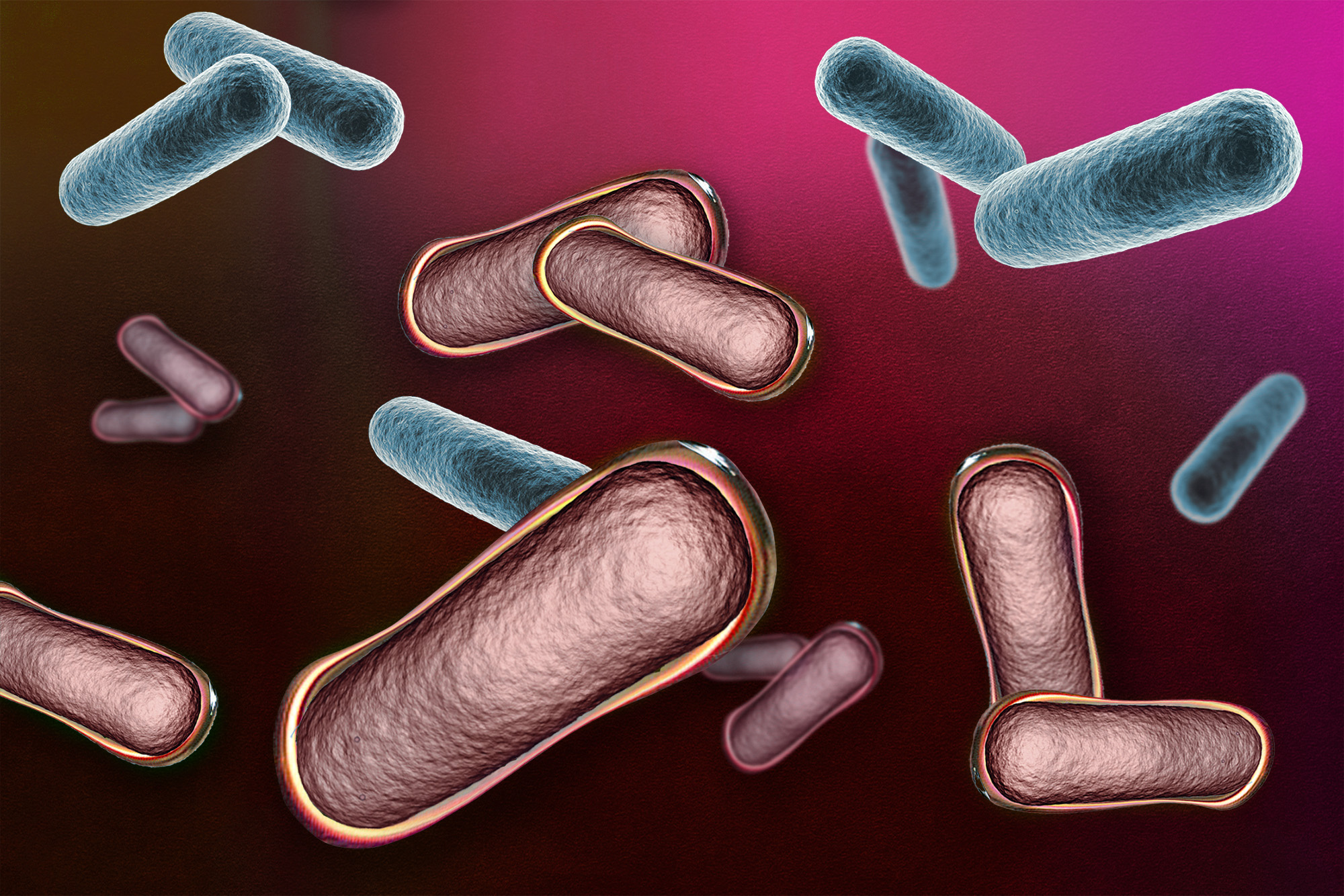Drugs from within
A coating that shields microbes from oxygen could make it easier for gut bacteria to be used as disease treatments.

The human gut is home to thousands of species of bacteria, some with the potential to combat gastrointestinal diseases from colon cancer to C. difficile infections. One obstacle to developing these “living biotherapeutics” is that many of the bacteria are harmed by oxygen, but MIT engineers have now developed a coating that could help them survive drug manufacturing. It can be used on a strain of E. coli, on bacteria that may aid in digestion of plant starches, and potentially on many other species as well.
Led by Ariel Furst, a professor of chemical engineering, the MIT team set out to protect oxygen-sensitive bacteria by coating them with a material made from metal ions and organic compounds called polyphenols, which form a grid-like sheet when put into a solution. If bacteria are also added to the solution, the material self-assembles into a coating on individual bacterial cells. This coating protects bacteria during the drug manufacturing process, which typically involves freeze-drying them and formulating them as capsules. When exposed to an acidic environment, such as that of the stomach, the coating breaks down and releases the bacteria.
One of the strains that the researchers used to test the coating is Bacteroides thetaiotaomicron. This species, which has enzymes specialized to digest carbohydrates, appears to be more abundant in the gut microbiome of healthy people. Because they are so sensitive to oxygen, however, it has been difficult to study how these bacteria might promote health if given as biotherapeutics.
Bacteria protected with the newly developed coating could also be used to help make crops more stress-tolerant. Another possible application is to protect microbes that are used as vaccines, which could eliminate the need for cold storage that makes some vaccines hard to distribute.
“We believe this coating could be used to protect pretty much any microbe of interest,” says Furst. “If we can remove the need for cold storage and transport, we think it would make a lot of therapeutics more widely available.”
Keep Reading
Most Popular
Large language models can do jaw-dropping things. But nobody knows exactly why.
And that's a problem. Figuring it out is one of the biggest scientific puzzles of our time and a crucial step towards controlling more powerful future models.
How scientists traced a mysterious covid case back to six toilets
When wastewater surveillance turns into a hunt for a single infected individual, the ethics get tricky.
The problem with plug-in hybrids? Their drivers.
Plug-in hybrids are often sold as a transition to EVs, but new data from Europe shows we’re still underestimating the emissions they produce.
Stay connected
Get the latest updates from
MIT Technology Review
Discover special offers, top stories, upcoming events, and more.